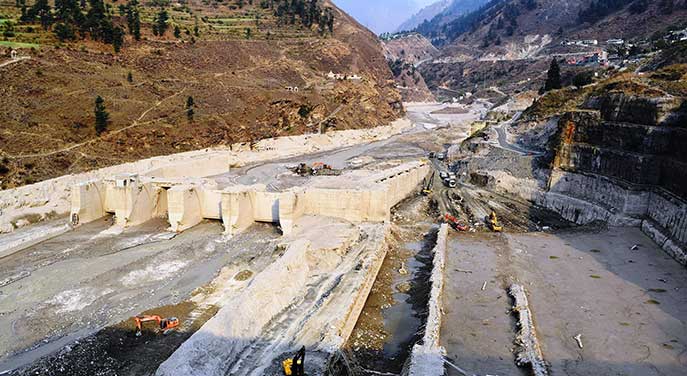
The Tapovan Vishnugad hydroelectric plant in India’s Chamoli district was destroyed by a devastating debris flow on Feb 7, 2021. A new international study shows what caused the massive slide and why it was so disastrous. (Photo: Irfan Rashid, Department of Geoinformatics, University of Kashmir)
The catastrophic landslide that occurred in Chamoli, India, in February 2021 was the result of a worst-possible combination of rock and ice, according to a new study by an international coalition of scientists.
On Feb. 7, 2021, Chamoli district in India’s Uttarakhand region was crushed by a massive slide of rock and ice – more than 25 million cubic metres – that destroyed two hydropower stations and left more than 200 people dead or missing.
The energy released by the falling slide was sufficient to melt the ice that came down with it, explained Jeffrey Kavanaugh, co-author of the study and associate professor in the University of Alberta’s Department of Earth and Atmospheric Sciences.
“Our study showed that the particular makeup of the slide, roughly 80 per cent rock and 20 per cent ice, was close to a worst-case scenario. The slide fell a great distance – in total, well over three vertical km – which released enough energy to melt almost all of the ice.”
The melting ice rapidly transformed the slide into a very dense and mobile mixture of rock, water and ice, which travelled down-valley for tens of kilometres. The slide resulted in the death or disappearance of 200 people and nearly $75 million in damage.
“The hydropower stations damaged during the event were being built due to increased demand for low-carbon energy. This is a location where mountain hazards are significant and potentially increasing due to climatic change, and where there are significant concerns regarding environmental impacts, public safety and social justice,” added Kavanaugh.
Kavanaugh is part of a team of 53 scientists from around the world who came together to investigate the cause, scope and impact of the disaster. Led by Dan Shugar at the University of Calgary, the researchers analyzed satellite imagery, seismic records and eyewitness videos to produce computer models of the flow.
“High-resolution satellite imagery obtained as the disaster unfolded was critical to helping us understand the event in almost real-time,” said Shugar. “We tracked a plume of dust and water to a conspicuous dark patch high on a steep slope. This was the source of a giant landslide that triggered the cascade of events and caused immense death and destruction.”
The study, “A massive rock and ice avalanche caused the 2021 disaster at Chamoli, Indian Himalaya,” was published in Science.
| By Katie Willis
This article was submitted by the University of Alberta’s Folio online magazine. The University of Alberta is a Troy Media Editorial Content Provider Partner.
© Troy Media
Troy Media is an editorial content provider to media outlets and its own hosted community news outlets across Canada.


